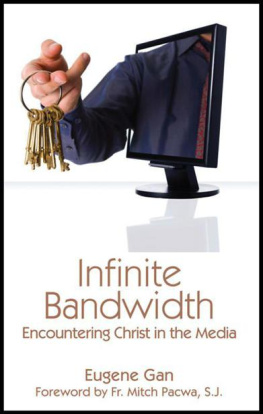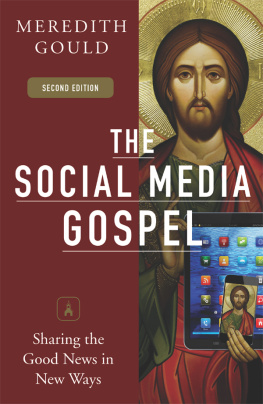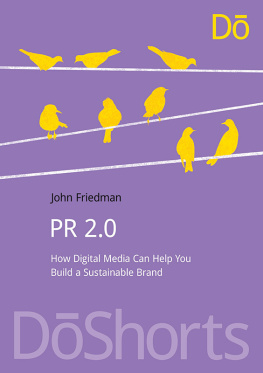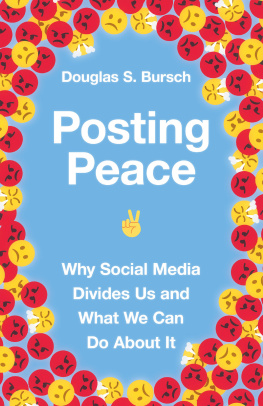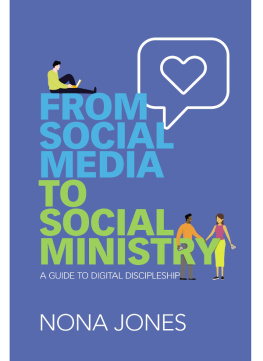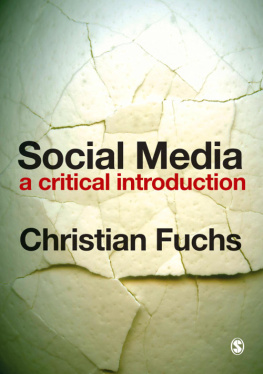
Emmaus Road Publishing
827 North Fourth Street
Steubenville, Ohio 43952
2010 by Eugene Gan
All rights reserved. Published 2010
Printed in United States of America
13 12 11 10 1 2 3 4
Library of Congress Control Number: 2010934255
ISBN: 978-1-931018-67-8
Scripture quotations are from Revised Standard Version of the BibleSecond Catholic Edition (Ignatius Edition) Copyright 2006 National Council of the Churches of Christ in the United States of America. Used by permission. All rights reserved.
Excerpts from the English translation of the Catechism of the Catholic Church for the United States of America copyright 1994, United States Catholic Conference, Inc.Libreria Editrice Vaticana. English translation of the Catechism of the Catholic Church: Modifications from the Editio Typica copyright 1997, United States Catholic Conference, Inc.Libreria Editrice Vaticana. Noted as CCC in the text.
Cover design and layout by Julie Davis, General Glyphics, Inc., Dallas, Texas (www.glyphnet.com)

Table of Contents

Foreword
by Fr. Mitch Pacwa
A series of major changes has occurred during my lifetime in the arena of the mass media. As a small child I listened to a few radio soap operas with my Grandmother, but very soon these stories ceased being broadcast on radio because they moved to television, which was beginning to expand its broadcast time into larger chunks of time early in the day. Chicago was able to receive only four channelsthe three national networks and a local station, WGNthough that was more than many cities enjoyed. The screens were small and the colors limited to black, white and gray. As with the soap operas, the formats for TV were drawn from radio and the movies. Video tape would not be available until the early 1960s, so much programming was live and oriented to viewing by any and all members of the family.
Throughout the last half of the twentieth century we were amazed and pleased with technological changes in the medialarger television screens, color, transistor radios, video players and recorders, audio cassette tapes, compact disk players and recorders, DVD players and recorders, computers, laptops, the Internet, cell phones, cable and satellite TV and radio, etc. I still remember seeing the first unveiling of a room-sized computer on the Art Linkletter Show in the mid 1950s. The lighthearted application was an attempt to help match men and women for the perfect marriages through a computer program. Little did we imagine that within forty years we could buy palm size calculators and computers that would outperform Univac.
During my undergrad years at the University of Detroit I became a student of R. Buckminster Fuller, the inventor of the geodesic dome, among other things. His lectures as a visiting professor laid out the general lines of the development of the new technology, including personal computers, cell phones, and satellite television. Still, I never ceased to be amazed at each new technology and its accessibility to the general public at a rapid pace.
This rapid development of the physical tools of the media was accompanied by two significant phenomena: the proliferation of media outlets; and a radical change in cultural values.
From the 1950s until the early twenty-first century the number of nationally available television stations has gone from three to hundreds. The availability of international channels through satellite or through the Internet magnifies the number tremendously. News, sports, and entertainment for every taste and interest can be present in any home with the appropriate technology.
At the same time the culture has gravitated from the Judaeo-Christian family values of the first half of the twentieth century to a relativistic withdrawal from upholding these values. This change occurred over five decades because of a confluence of influences. One influence was the rise of various psychologies to popular consciousness. Some of them, particularly the Freudians, understood sexual repression as the cause of most human suffering. Then, the behaviorists asserted that the human psyche can be quantified and behavior changed without reference to a mythic free will. This school asserted that no moral values could be measured and therefore did not exist. Another school, the existentialists, claimed that human freedom is the touch point of all meaning in life. However, with no other referent to form the basis upon which truth could be built, each person needs to find the core of freedom within and then define whatever meaning appears best.
Besides these intellectual movements, a variety of popular movements swept not only America but many other regions of the world. Among them were the wider use of various illegal drugs, which has become so rampant and whose distribution system is so violent that strong moves for legalization of these drugs have taken hold of some European nations and some American states. Another popular movement has been the widespread acceptance of sex outside of marriage. Now some nations and states have redefined marriage beyond the one man, one woman and children model.
While experimentation with sexual and drug use may not require too much encouragement among many segments of society, for the sake of the rest of the people a type of justification has been based on an insistence on a relativistic morality. The very existence of such diverse lifestyles means that no one has the authority or even ability to determine society's moral norms. Cultural leaders exhort all people to stop judging others, not because of Jesus Christ's admonition to humbly avoid declarations of God's eternal judgment on other persons, but because no basis exists to judge whether behaviors are good or bad. Relativism makes it difficult to prohibit the violent, the pornographic, or the philosophically cynical attitudes that are opposed to truth and beauty.
Of course, these changes in philosophy, psychology, and relativistic morals have made their presence known quite forcefully on television. Television has moved from Lucy and Ricky (and every other television married couple) sleeping in separate beds to any and every sexual act being easily available for viewing by anyone who desires it. Television fathers moved from being wise and caring men who respected their wives and children (e.g., Father Knows Best) to dolts who cannot stop or even criticize their wives' or children's licentious behavior.
Despite this moral decline, the desire for truth cannot be completely suppressed by society's emerging or dominant lack of traditional values. An essential component of being human is the possession of reason and memory, by which knowledge is thoughtfully considered and decisions are made. The ability to think well continues to emerge as many media offer alternatives to the dominant relativism. There are many religious networks, educational channels, political and economic networks. Though this diversity may seem minuscule compared to the outlets available on cable television or the Internet, it remains available and the opportunities to make it grow are also available.

